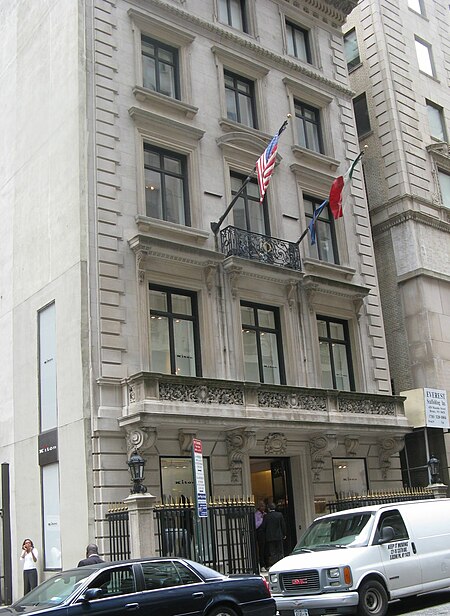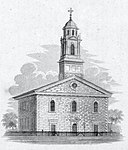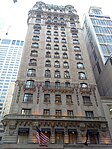William H. Moore House

The William H. Moore House, also known as the Stokes-Moore Mansion and 4 East 54th Street, is a commercial building in the Midtown Manhattan neighborhood of New York City. It is along 54th Street's southern sidewalk between Madison Avenue and Fifth Avenue. The building was designed by McKim, Mead & White and constructed between 1898 and 1900 as a private residence. The house is a six-story, rectangular stone building in the Renaissance Revival style. It has an English basement on the first floor, which is clad with rusticated blocks of the stone. There is a balustrade and overhanging cornice above the fifth floor. A sixth floor, recessed from the street, was added in the 1990s. The house was commissioned by developer William Earle Dodge Stokes and purchased by financier William Henry Moore before its completion. Although William H. Moore died in the mansion in 1923, his wife Ada resided in the house until her death in 1955. Afterward, the house contained offices for organizations and companies such as the America-Israel Cultural Foundation and the Banco di Napoli, as well as a store for fashion company Kiton. The New York City Landmarks Preservation Commission designated 4 East 54th Street as an official landmark in 1967, and it was added to the National Register of Historic Places on March 16, 1972.
Excerpt from the Wikipedia article William H. Moore House (License: CC BY-SA 3.0, Authors, Images).William H. Moore House
East 54th Street, New York Manhattan
Geographical coordinates (GPS) Address Nearby Places Show on map
Geographical coordinates (GPS)
| Latitude | Longitude |
|---|---|
| N 40.7606 ° | E -73.9749 ° |
Address
East 54th Street 4
10022 New York, Manhattan
New York, United States
Open on Google Maps








